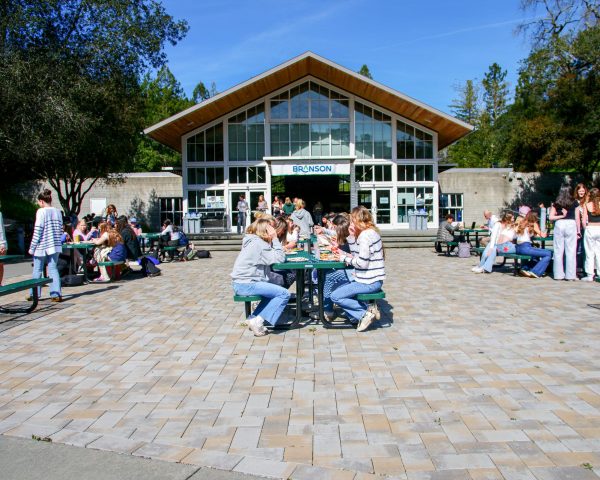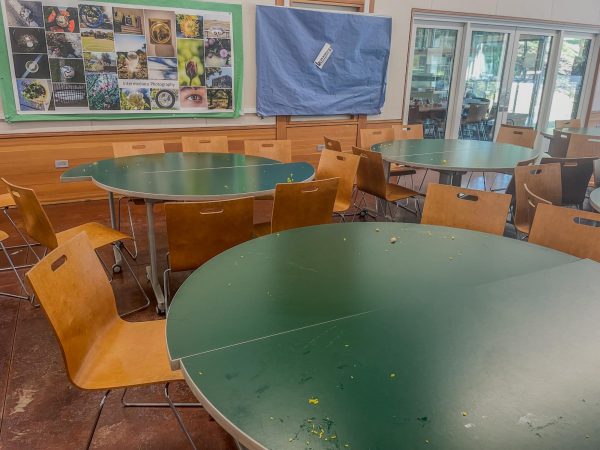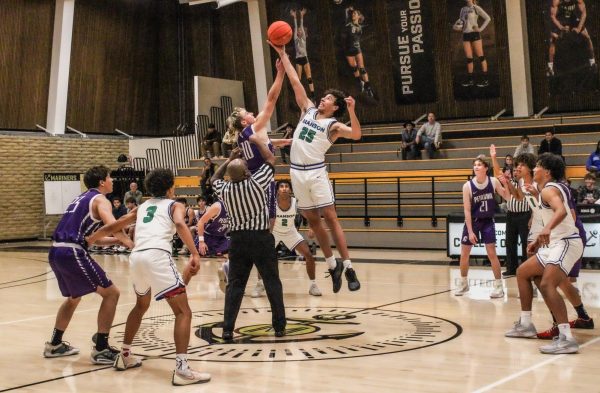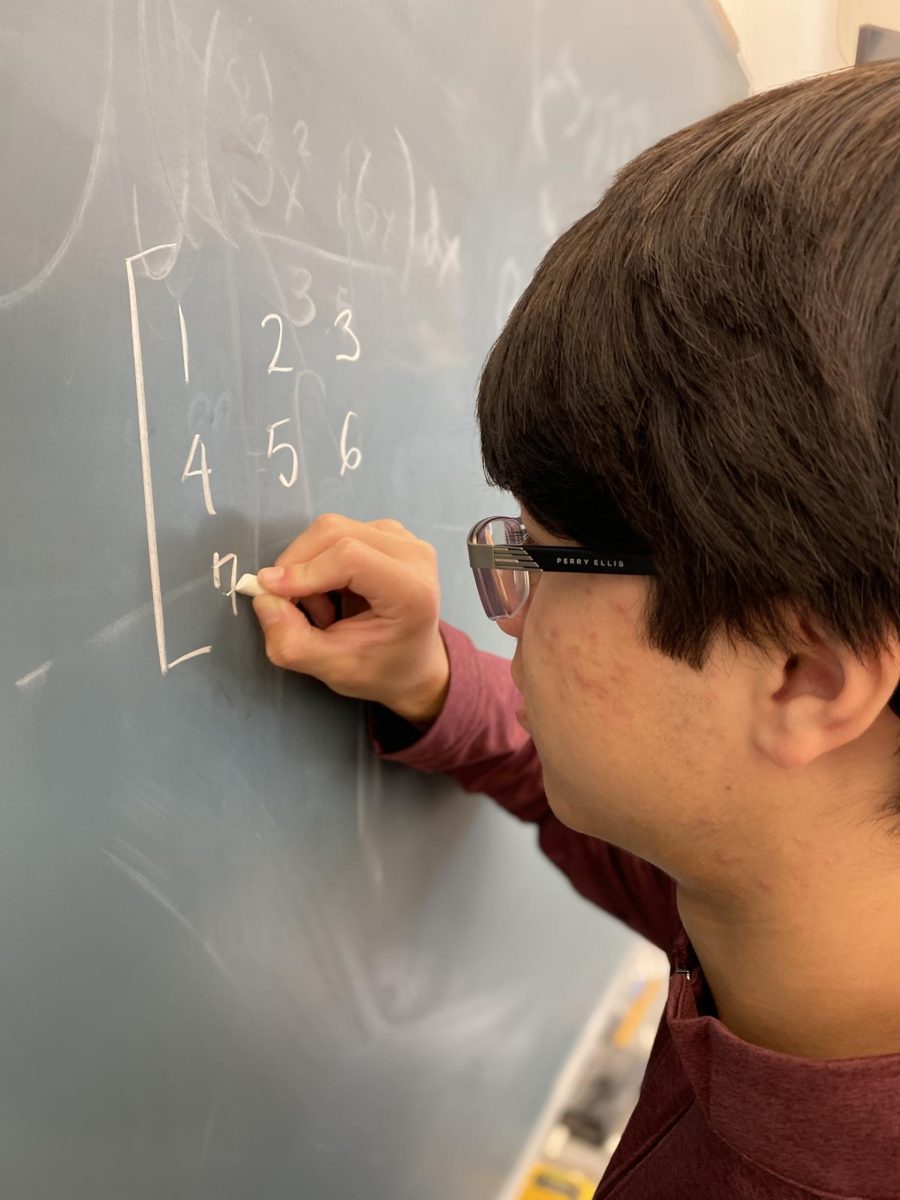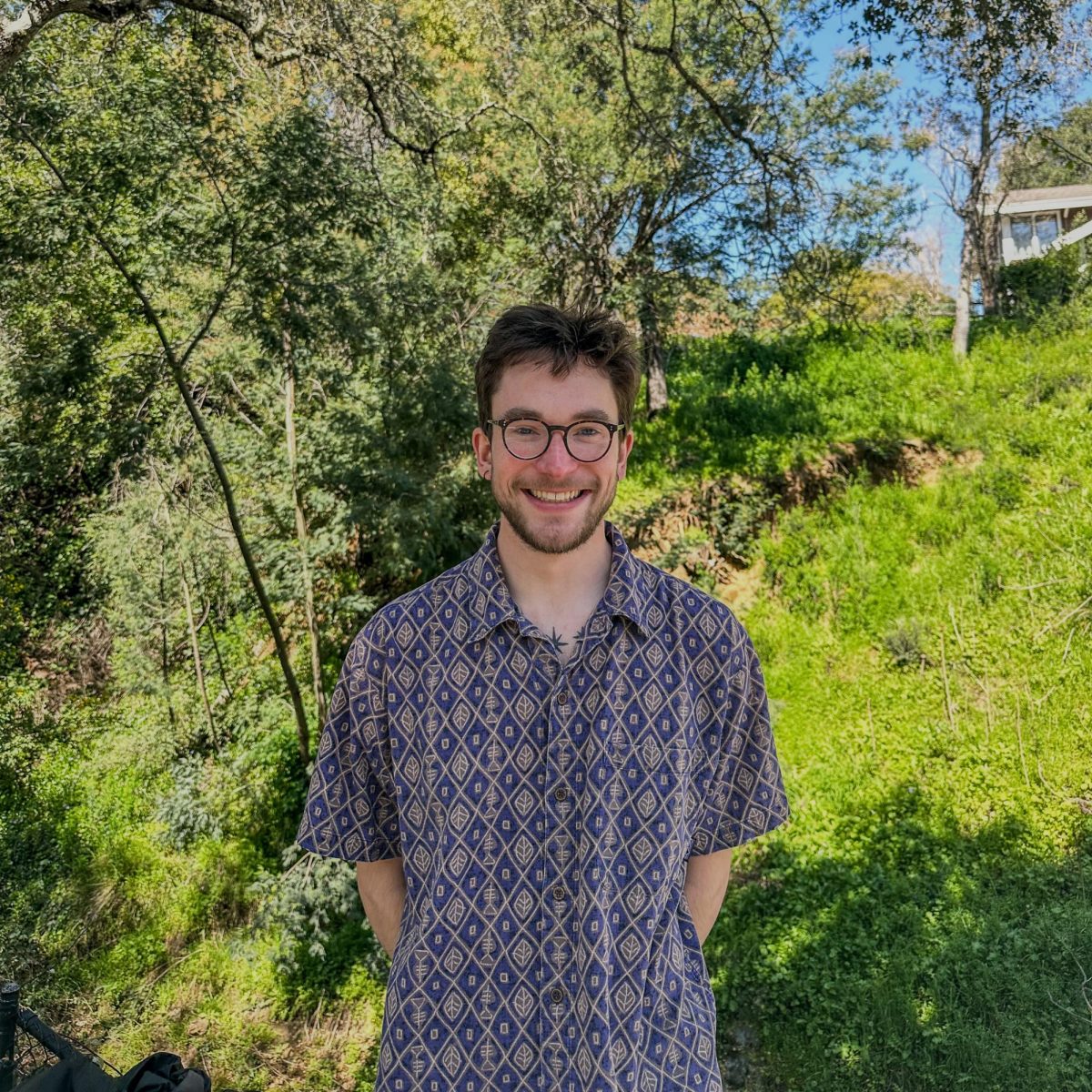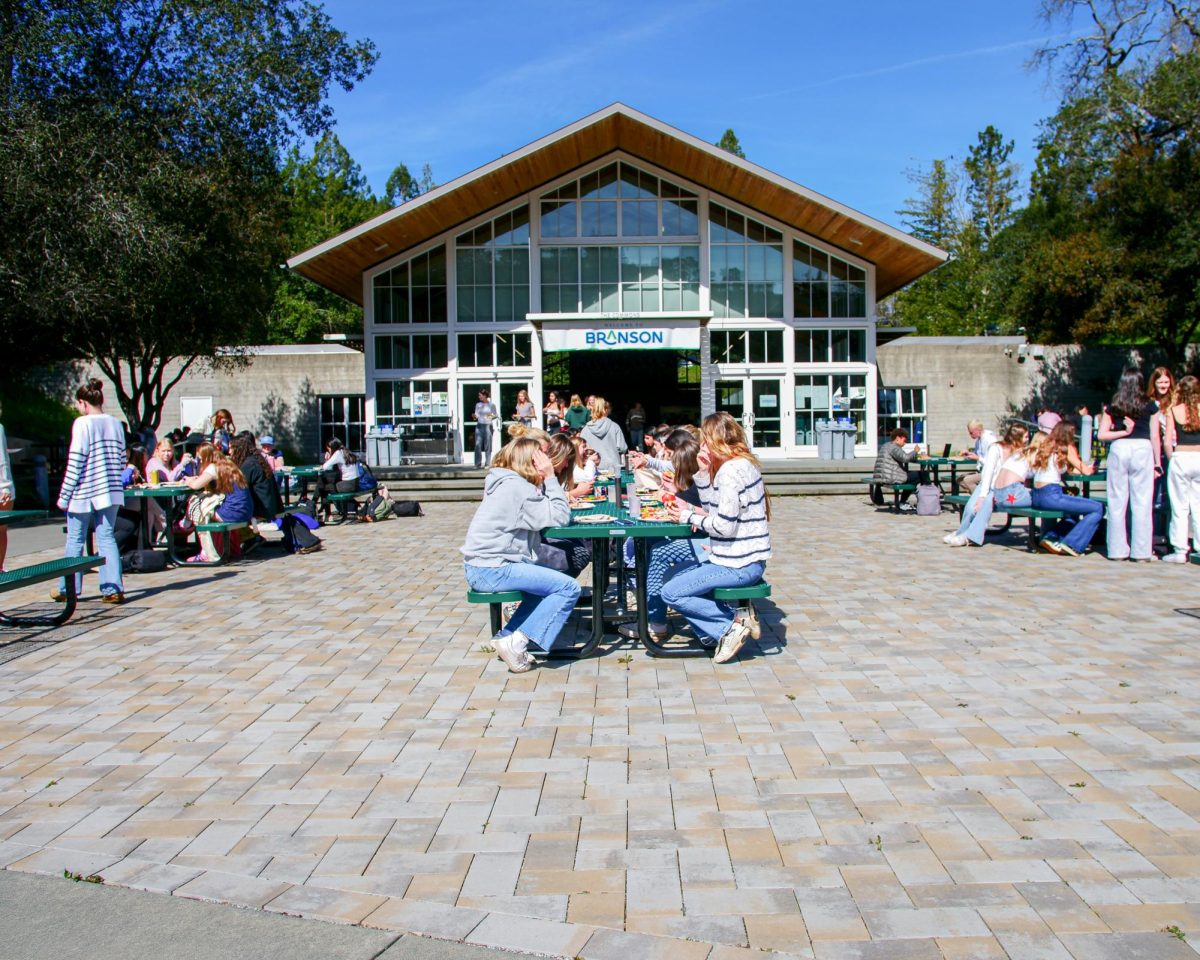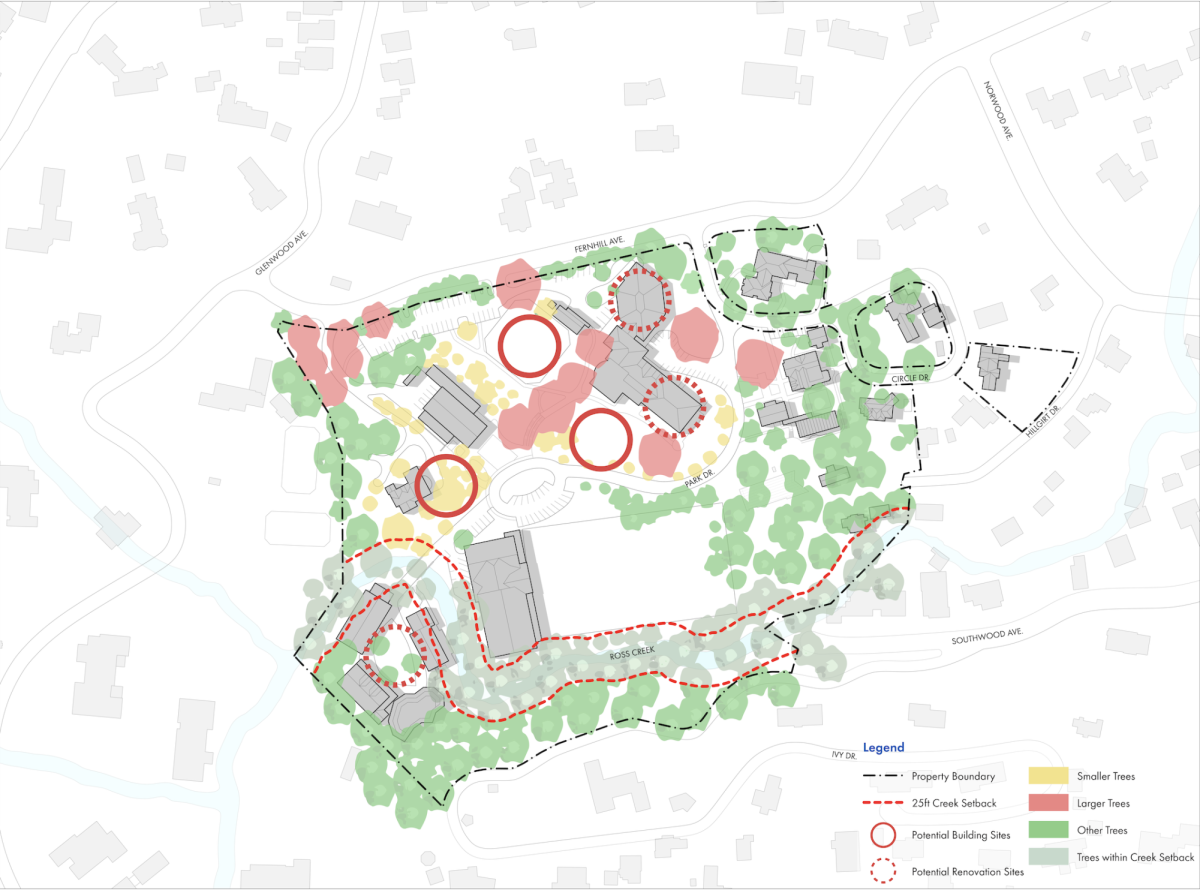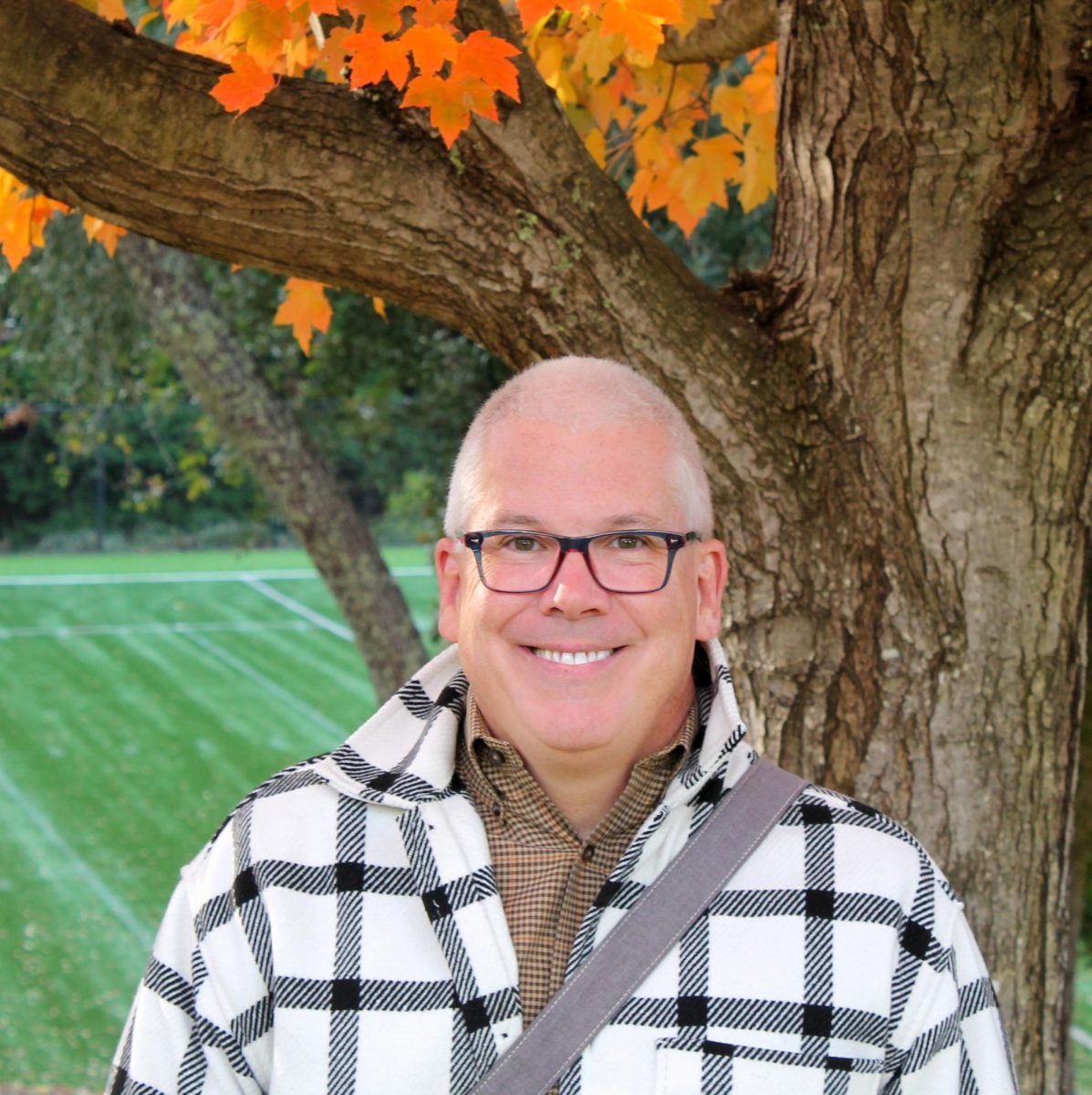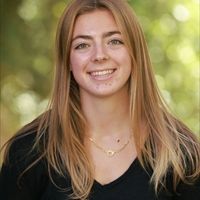The math classrooms at Branson are transforming as a group of teachers implement a new problems-based curriculum to several of the classes, specifically Algebra II Honors, Geometry Honors and Linear Algebra.
Teachers are veering away from the traditional style of lecturing and instructing students based on a textbook. Instead, they are moving towards a more student-led method, one where students learn by problem-solving and teaching themselves new concepts.
For homework, students will work their way through a problem set, using resources such as online videos or articles to dissect the strategies required to solve it. In class, each student will write their approach to the problem on the board and then present it to their peers. The class will listen as the student “teaches” the problem and they’ll ask questions or propose their own solutions.
“Discussions get really involved when other students have a different way to solve it and organically that student will jump up to the board to present their unique way,” said Gillian Kneass, a math teacher at Branson. “It creates these in depth discussions that you might not otherwise see in a math classroom.”
Along with the change in the everyday class instruction, assessments have also been adapted to suit this new form of learning. The predominant type of evaluation comes in the form of group quizzes.
However, teachers don’t grade these quizzes on accuracy.
“We just care about the questions that others asked, the insight they might produce from the problem and the connections they can form between the current problems and ones they’ve seen before,” said Gayatri Ramesh, math department chair and teacher at Branson.
The quizzes are designed to be similar to the problem sets given for homework. In a collection of about 10-11 problems, students encounter a variety of concepts, not only ones limited to the specific “unit.”
“We don’t leave anything behind because what they learn is going to show up throughout the year. Students are grappling with so many different concepts at once that there is no cumulative test because the material itself is cumulative,” said Ramesh.
For example, each problem set is “not an entire set of questions on complex numbers. They will have a graphing parabolas problem, then a complex numbers problem and then a vector problem. It just continues to spiral and add more detail with each new problem,” said Kneass.
The initiative for implementing these changes stemmed from Ramesh’s work at Phillips Exeter Academy for six years before joining Branson.
“I am taking those principles and applying them here. A lot of the problems are Exeter’s and we add our own or tailor them for our students,” she said.
Another aspect gleaned from this new style of education is the lack of textbooks for these math courses.
“The textbook is great but I find that they sometimes are a bit prescriptive in telling kids what to do rather than encouraging them to use the ideas they already have or bring their prior knowledge in to build and innovate,” she said.
In response to this, the curriculum requires students to write their own textbooks. Students are given a journal at the start of the year and are asked to write down their experiences with each of the problems.
The questions they reflect on include: “Was it hard? Was it easy? What method did you choose? Did you revisit it after getting more information in class? What are you learning from this specific problem?” said Kneass.
[Student-led classes] builds a sense of discovery and collaboration with other people — Gillian Kneass
“They can start to classify them into vector, trig or parametric equation problems, for example. Maybe they might color code them which creates a road map through the entire problem set,” said Kneass. “So, when they get to problem 253 and they know it is a parametric equation problem, they can look back and all those problems are highlighted in purple. It creates their own textbook in a way but it’s all written in their words and feeling of how the problems went for them personally.”
Branson students are fully leaning into this challenge as last year in the inaugural class with this method of learning, one student took a unique approach:
“Some of the quieter students are the ones who had the most detailed work. One even drew a comic book version of a Geometry Honors textbook which had amazing visuals,” Ramesh said.
From the diverse problem sets to students teaching students, math takes on a whole new appeal.
“It gives students a sense of control over their own understanding and development,” said Ramesh. “A lot of times it helps students learn better because they put it in their own words and it creates muscle memory of doing it on their own rather than a book telling them what to do.”
Students are experiencing similar effects from the change in learning style.
Charlotte Johnson ‘24, who is in Linear Algebra, said, “I like how interactive it is and teaching a problem helps you understand it more, plus everyone applauds when you finish presenting … The class is small, so it really creates a community.”
“I honestly like it more. It’s challenging sometimes because you have to figure out some material yourself but the problems help you get there,” said Sophie Arnal ‘26, who takes Algebra II Honors. “You are teaching yourself the problems so you can better understand how you get to the solution.”
Beyond the in-class learning, the method encourages students “to meet with [their] teachers more outside of class because the one on one is very helpful,” said Emmy Bales ‘27, who takes Geometry Honors. “Plus, when I look back I see myself learning and feel like my problem solving skills are definitely improving. I notice that I am more willing to make mistakes too.”
On the other hand, the changes also bring areas for growth. One of these improvements is the time requirement for homework which is more demanding than the traditional method of learning.
“I have to look up a lot of things online because I don’t know the concepts. It can be challenging because in another class they just tell you how to do it or you can look at the textbook, but in Linear [Algebra] you have to figure it out yourself,” said Johnson. “The main downfall is that it’s hard to find resources online for the specific problems and the teacher doesn’t come to class with a lesson so I don’t know what information to keep track of.”
However, the built-in struggle that molds the core of this curriculum can reappear in the skills developed from practicing this method.
“It builds a sense of discovery and collaboration with other people,” Kneass said. “In real life you aren’t given a prescriptive problem … Learning to collaborate with others and developing a curiosity about where a problem might take you and what you can learn from it is the most important thing that I try to instill in my students.”


